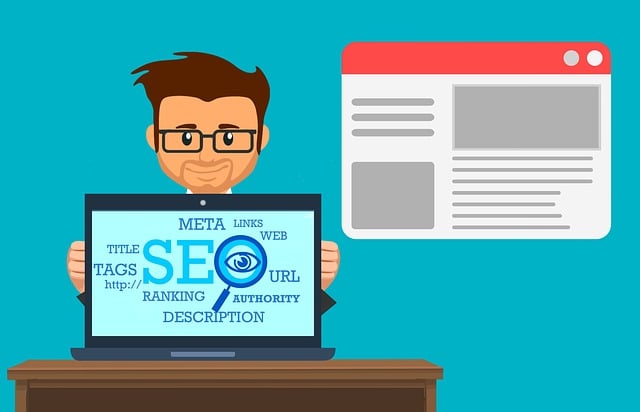White-Hat SEO focuses on ethical practices to boost website visibility, emphasizing high-quality content, keyword research, and sustainable link building. Key strategies include creating valuable content tailored to user intent, using keyword tools for relevant terms, optimizing meta tags, and building reputable backlinks. On-page optimization, engaging storytelling, and regular content updates enhance user experience and search engine rankings. Image optimization, KPI tracking, and mutual benefit outreach are also vital techniques for successful White-Hat SEO.
In today’s digital landscape, successful online visibility demands a strategic approach to content creation that aligns with ethical search engine optimization practices—White-Hat SEO. This comprehensive guide delves into the art and science of crafting high-quality content tailored for optimal search rankings. From understanding fundamental principles like keyword research to advanced strategies such as meta tag optimization and building quality backlinks, you’ll explore proven White-Hat SEO techniques designed to elevate your online presence.
Understanding White-Hat SEO: Ethical Search Engine Optimization Practices

White-Hat SEO refers to a set of ethical search engine optimization practices designed to enhance website visibility in organic search results while adhering to search engines’ guidelines and policies. It’s about creating high-quality content, optimizing web pages effectively, and building genuine links naturally, rather than employing manipulative tactics that could harm user experience or violate search engine rules. By focusing on these white-hat techniques, content creators and marketers ensure their efforts remain sustainable and align with the ever-evolving algorithms of major search engines like Google.
At the core of white-hat SEO is understanding user intent and providing valuable content that answers their questions or addresses their needs. This involves keyword research to identify relevant terms users are searching for, creating compelling and informative content around those keywords, and optimizing on-page elements like titles, meta descriptions, and headings to improve discoverability. Additionally, building high-quality backlinks from reputable sources through outreach, guest blogging, or earning links through exceptional content is a key white-hat technique that signals to search engines the authority and trustworthiness of a website.
The Role of High-Quality Content in White-Hat SEO Strategies

In the realm of White-Hat SEO Techniques, high-quality content stands as a cornerstone. It’s not just about optimizing keywords; it’s about creating valuable, engaging material that resonates with your audience and search engine algorithms alike. Well-crafted content enriches user experience, fosters trust, and drives organic traffic—all key factors in achieving long-term success under White-Hat SEO guidelines.
This approach involves a deep understanding of your target demographic and their information needs. By consistently producing informative, relevant, and unique content, you establish your website as an authority in your niche. Search engines recognize this value, rewarding it with higher rankings—a strategic move that ensures the sustainability and visibility of your online presence over time.
Keyword Research and On-Page Optimization Techniques

Keyword research is a cornerstone of successful White-Hat SEO techniques. It involves identifying relevant terms and phrases that potential audiences use to search for content related to your niche. Tools like Google Keyword Planner, SEMrush, or Ahrefs can help uncover keywords with high search volumes and low competition, ensuring your content ranks higher on search engine results pages (SERPs). Incorporating these keywords naturally into your content, including in titles, headings, meta descriptions, and throughout the body, enhances its relevance and makes it more attractive to both users and search engines.
On-page optimization techniques complement keyword research by enhancing the overall quality and structure of your web pages. This includes optimizing images with alt tags, ensuring fast page loading speeds, implementing responsive design for mobile usability, and using header tags (H1, H2, etc.) effectively. Internal linking strategies also play a crucial role in White-Hat SEO. Linking to relevant content within your site improves user experience, reduces bounce rates, and allows search engines to understand the context of your pages more effectively.
Creating Engaging Content That Resonates with Audiences

When crafting content for White-Hat SEO, engaging and resonating with audiences is paramount. It’s no longer enough to simply optimize keywords; today’s users demand value, relevance, and originality. To capture attention, create content that offers insights, entertains, or solves problems. Incorporate compelling storytelling, use a conversational tone, and address pain points directly. By understanding your target audience’s interests, behaviors, and needs, you can tailor content that not only ranks well but also fosters meaningful connections.
White-Hat SEO Techniques emphasize the importance of quality over quantity. This means investing time in research to produce in-depth, informative pieces that provide genuine value. Visual aids, such as infographics or videos, can enhance engagement and improve retention rates. Additionally, regular interaction with your audience through comments and social media responses builds a loyal community, encouraging user-generated content and backlinking opportunities—all vital components of successful White-Hat SEO.
Utilizing Meta Tags and Description for Better Visibility

When it comes to White-Hat SEO techniques, meta tags and descriptions play a pivotal role in enhancing online visibility. These elements serve as the first point of contact between search engines and your website, making them crucial for attracting organic traffic. A well-optimized meta tag captures the essence of your web page content, providing search algorithms with a clear understanding of what users can expect to find. This precision targeting ensures that your site appears relevant in search results, increasing the chances of clicks.
Furthermore, the meta description acts as a compelling snapshot, showcasing the value proposition of your page. Crafting compelling and informative descriptions encourages potential visitors to click through, thereby reducing bounce rates. By integrating relevant keywords naturally within these tags, you reinforce the theme of your content, making it more appealing to both search engine crawlers and human users alike. This strategic approach is a cornerstone of successful White-Hat SEO practices.
Building Quality Backlinks Through Ethical Outreach

In the realm of White-Hat SEO Techniques, building quality backlinks is a cornerstone strategy that fosters organic growth. Ethical outreach involves proactively engaging with industry influencers and relevant websites to earn genuine backlinks, enhancing your site’s authority and visibility. This method navigates the intricate landscape of SEO by prioritizing mutual benefit and long-term sustainability, ensuring your link profile remains robust and free from penalties.
By cultivating relationships and offering valuable content or services, you can secure backlinks from reputable sources, which act as a symphony of endorsements, resonating with search engines. This approach differs from dubious tactics that aim to manipulate rankings, instead focusing on fostering a genuine online tapestry where each link is a testament to your site’s integrity and value.
Optimizing Images and Multimedia for Enhanced User Experience

In the realm of White-Hat SEO Techniques, optimizing images and multimedia is an often-overlooked yet powerful strategy to enhance user experience (UX). When properly integrated into content creation, visual elements can significantly impact search engine rankings while improving website usability. One key aspect is ensuring these assets are compressed without losing quality, reducing page load times, and thus enhancing UX.
Additionally, optimizing alt tags and file names with relevant keywords allows search engines to better understand the context of your images and multimedia. This not only improves accessibility for visually impaired users through screen readers but also provides valuable context signals to search algorithms, further bolstering your content’s SEO.
Regularly Updating Content to Stay Relevant and Authoritative

In the dynamic landscape of digital marketing, content creation is a cornerstone of successful White-Hat SEO strategies. To maintain relevance and authority, it’s imperative to regularly update your content. Search engines prioritize fresh, up-to-date information, as it reflects accuracy and reliability. By incorporating recent trends, data, and industry insights into your existing content, you not only fulfill this criterion but also enhance its value for readers.
Regular updates ensure your content stays ahead of the curve, aligning with user search intent. This involves keeping keywords current, adjusting meta titles and descriptions to reflect new information, and even re-optimizing multimedia elements like images and videos. Embracing these practices not only supports better search engine rankings but also fosters a sense of trust among readers, encouraging engagement and repeat visits.
Measuring Success: Analyzing Key Performance Indicators (KPIs)

Measuring success is a crucial aspect of any content creation strategy, especially when employing White-Hat SEO techniques. By analyzing Key Performance Indicators (KPIs), content creators and marketers can gain valuable insights into the effectiveness of their efforts. These metrics allow for data-driven decisions, ensuring that the created content resonates with the target audience and aligns with search engine optimization goals.
Popular KPIs include organic traffic growth, bounce rate reduction, and increased time spent on pages. For White-Hat SEO, focusing on long-term keyword rankings, backlink quality, and user engagement is essential. Regular monitoring of these KPIs enables creators to refine their content strategies, adapt to algorithm changes, and ultimately improve search engine visibility while maintaining high-quality standards.
